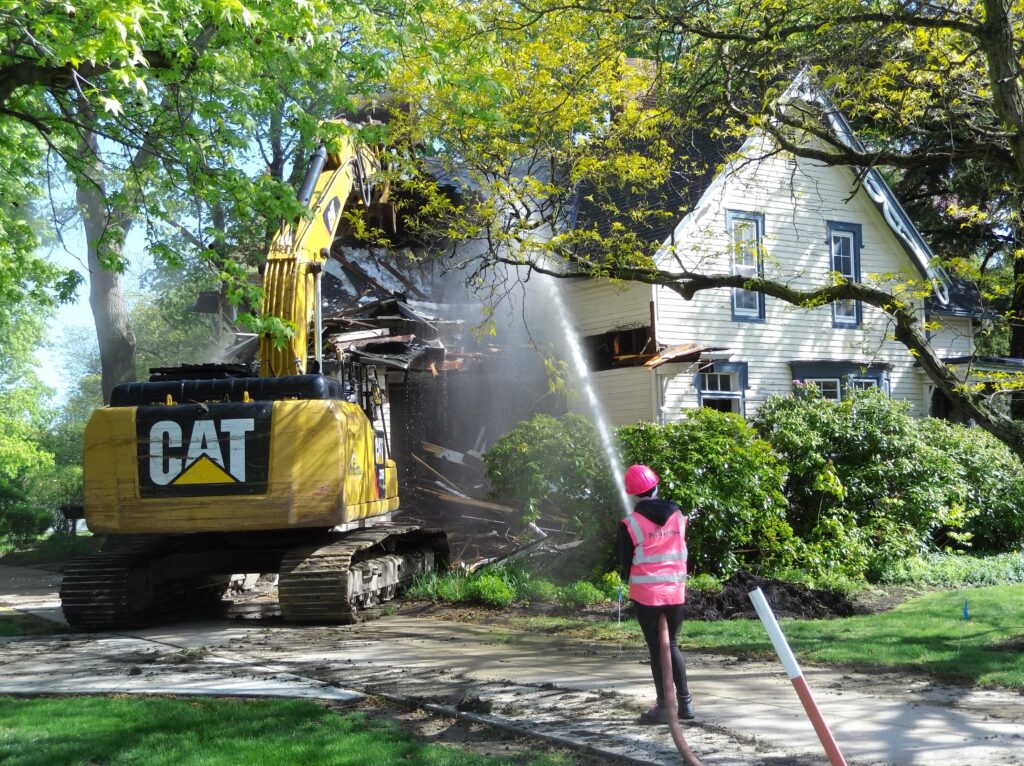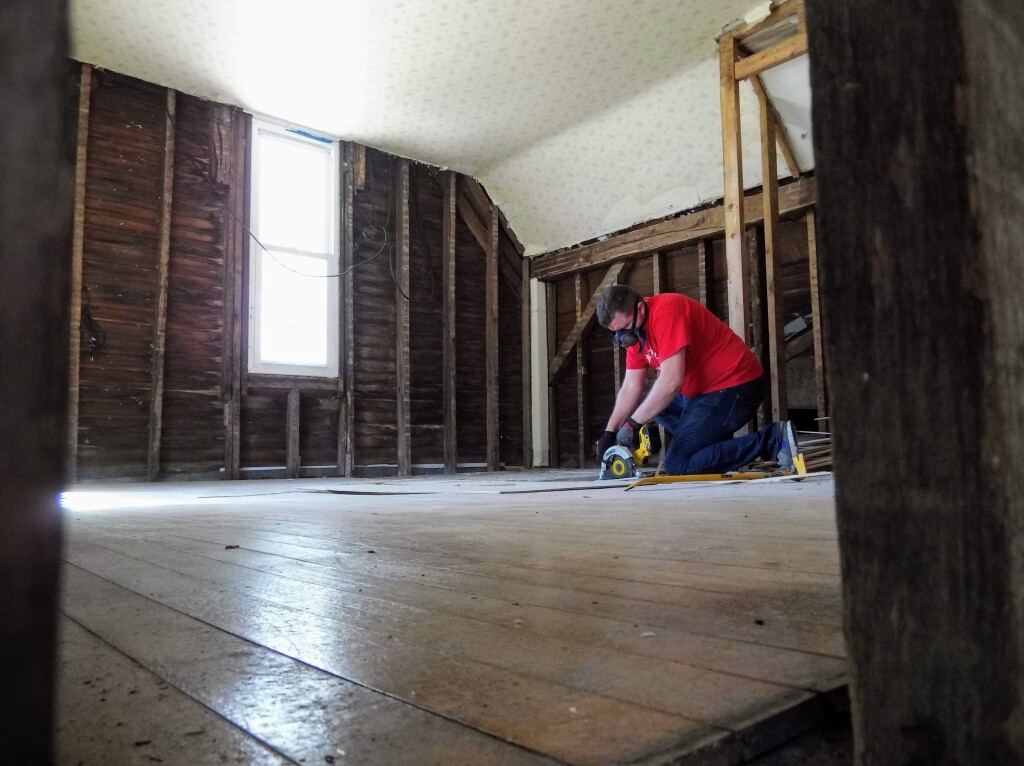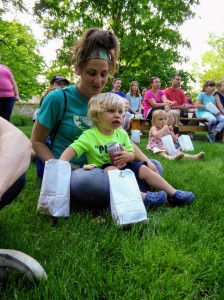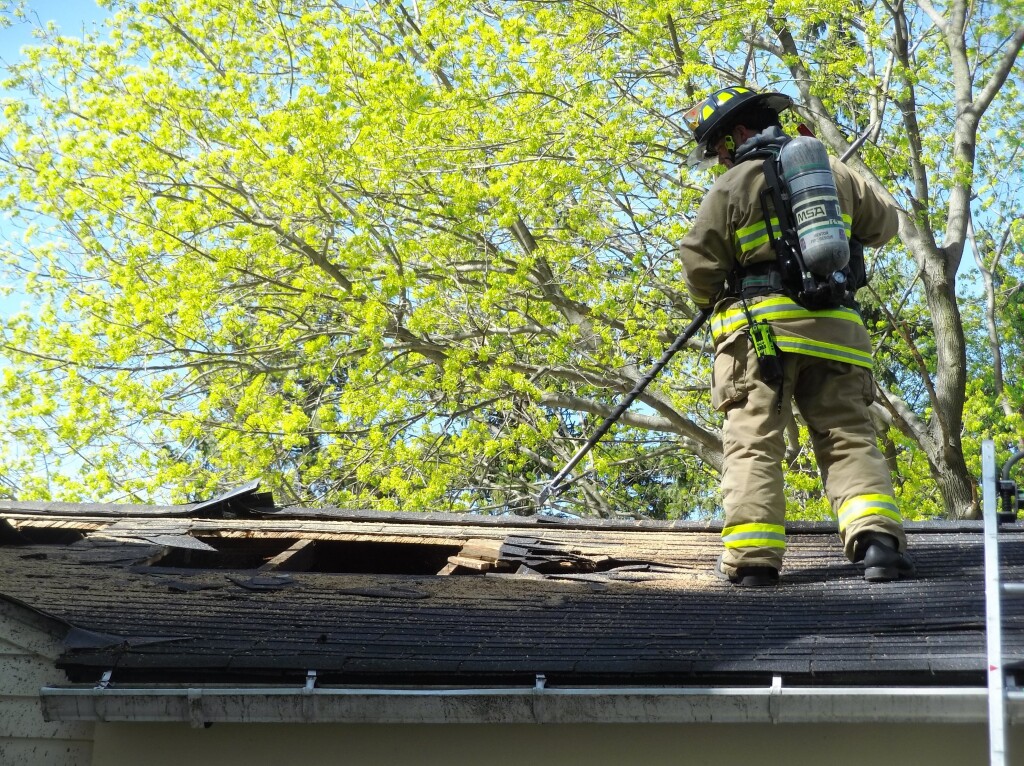 The Read House building was demolished on Monday, May 10.
The Read House building was demolished on Monday, May 10.
Some of its joists and beams were set aside for use by Cardinal Woodworking, a local carpenter who specializes in building with reclaimed lumber. Cardinal Woodworking is repurposing parts of the building to create unique furniture for the library that honors the history of the Read House.
The library will continue to use the surrounding green space extensively this summer for outdoor story times and other programs for families.
Previously, the Mentor Public Library Board of Trustees voted to enter into a contract with ProSupply Inc. for the abatement and demolition of the Read House building (located next door to our Main Branch at 8245 Mentor Ave.) CT Consultants – the architect on the project – recommended ProSupply as the lowest responsible bidder.
The contract was in the amount of $54,434, including a $5,000 contingency.

Corey of Cardinal Woodworking reclaims the poplar flooring that will be used to make unique furniture that honors the history of the Read House building
Before the building was demolished, many of its unique furnishings were reclaimed and repurposed. Cardinal Woodworking reclaimed some of the building’s poplar flooring.
Additionally, Lake History Center is preserving some of its interior furnishings, including doorknobs and light fixtures, for posterity.
And the Mentor Fire Department used the roof for vertical ventilation training.
Parts of the Read House were more than a century old, and the building would have needed extensive repairs if it were to continue being used by the public. While it’s difficult to guess how much renovation would cost because any repairs would require asbestos or lead-paint abatement, the library conservatively estimated in 2018 that it would require more than $200,000 for the building to meet public-safety standards. The cost would be even higher now.
The Read Property was purchased it in 2009. The Read House – the building specifically, not the property on which it stands – was available for purchase for 18 months. However, the library didn’t receive any offers. The library also contacted the Lake County History Center and Cleveland Restoration Society. While both organizations helpfully shared their expertise, neither were able to help find funds for renovation or were interested in procuring the building themselves.
 The Read House lawn provides a unique opportunity to offer outdoor library programming. We’ve used its lawn and surrounding green space to host concerts, campfires, community art projects, story times, scavenger hunts, nature journaling programs, Summer Reading parties, and more. More than 11,000 of our patrons have attended programs there.
The Read House lawn provides a unique opportunity to offer outdoor library programming. We’ve used its lawn and surrounding green space to host concerts, campfires, community art projects, story times, scavenger hunts, nature journaling programs, Summer Reading parties, and more. More than 11,000 of our patrons have attended programs there.
Meanwhile, the Read House building, built in 1868, has presented numerous challenges. Additions and repairs were made over a ten-year time period to try to make the private house more usable for the public, including:
- Making the building’s first floor ADA compliant, including adding an entry ramp
- Adding structural supports to the building’s basement so it could handle the increased foot traffic and weight once the private home was opened to the public
- Lead paint and asbestos abatement was required during all previous repairs
Despite these renovations, it was still difficult to make a previously private home serve as a public building. The small rooms on the main floor could not be reconfigured because the walls are loadbearing. And the second floor does not have ADA access, nor can it structurally support anything more than light storage.
As a result, the use of the building has been limited. Book sales were held on the first floor and the front room was used for small group weekly children’s story time. Even then, the building’s small rooms and narrow halls presented obstacles to patrons, especially those with mobility issues.
Even before the pandemic, we’d moved all library programming and book sales from inside the Read House Building to our Main Branch.
Evaluation of the structure
In 2018, the library contracted with a construction company and an architect to assess how to make the house more usable to the public for library programming.
The company and architect recommended several repairs, including:
- The front porch needed to be taken down and replaced.
- The foundation required masonry repair work.
- Cracking plaster in the walls and ceiling needed to be repaired.
- Old and potentially leaking siding and windows needed to be replaced.
The library hired a specialist who confirmed that lead paint was present and asbestos was in the walls. Any potential structural repair inside the Read House building would require costly asbestos and lead paint abatement.
CT Consultants estimated the potential repairs would cost at least $117,000; Greater Cleveland Consultants estimated at least $134,500. Neither estimate includes contingencies, including asbestos or lead-paint abatement. We estimate the cost of repairs and needed contingencies and abatement at around $200,000 in 2018.
Before demolition, the value of the home was $49,270 according to the Lake County Auditor’s Office.
The library investigated possible funding sources – including reaching out to the state – to help pay for renovations, but none were found. Ultimately, it was deemed cost-prohibitive to renovate the building.
This left the library with two more options: sell the building or demolish it.
Without other options, the Board voted to contract with ProSupply Inc. for abatement and demolition of the Read House Building. The library will continue to use the surrounding property for outdoor programming.

